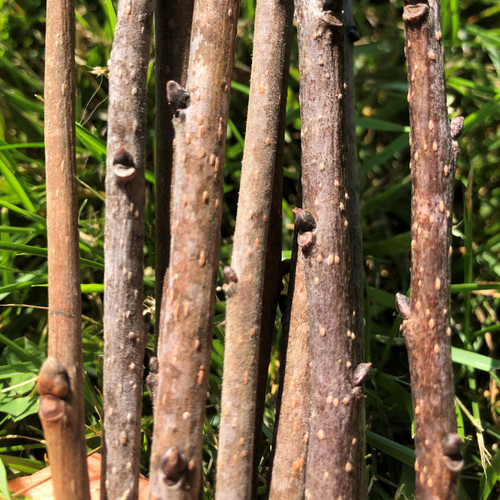Product Overview
LIGHT: Full sun, Part shade
MOISTURE: They are substantially more productive with plenty of moisture
WIDTH: Indefinite, spreading
NATIVE RANGE: Eastern North America. As far north as southern Canada, as far south as Florida, and as far east a Colorado.
NATIVE HABITAT: Meadows, thickets, hedge, near streams
EDIBLE PARTS: Tuber and bean
NUTRITION: Tuber- Has three times the protein as potatoes. They are a good source of calcium and iron, and there is evidence of anti-cancer activity.
FOOD PREPARATION: They are often cooked as you would a potato. They can also be baked into chips or dried and ground into flour. I like them in stews and with oven roasted meats.
HISTORY: Important food to Native Americans. They would harvest it in the wild and transplant the tubers to create stands closer to their settlements. Has been cultivated in Japan for 100 years.
EDIBILITY SEASON: Once established, Groundnut can be harvested at any time of year. Tuber size after two seasons of growth will be substantially larger than after one season of growth.
PLANTING: When working with a new species, I typically recommend planting them in multiple different locations to see what works best for them in your climate and context. Groundnuts can be planted at any time of year. However, if you want to harvest a sizable crop they need to be planted in early spring, or in the fall of the previous season. Plant them 12-18 inches apart. I find they do well along fence rows and in more moist locations on my farm.
MAINTENANCE: Once a stand is established they will maintain themselves. I don't find weeding necessary. In my experience they co-exist well with others and use other plants as a trellis. They will be less productive if they don't get enough water. I smother my plantings in woodchips to retain moisture and make harvesting easier.
HARVEST: Dig with your favorite implement and enjoy. I use a potato fork. If the planting has lots of woodchips they tend to grow their tubers just bellow them, requiring very little digging. Leave behind some tubers to ensure the stand will be maintained.









